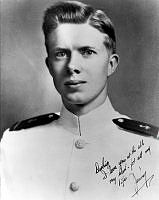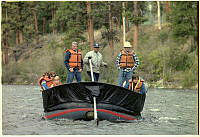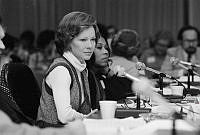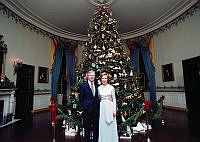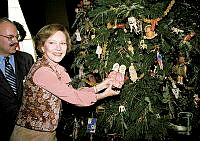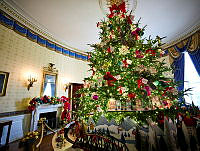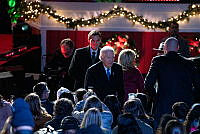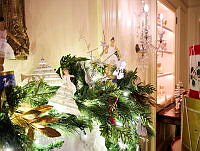Edith Roosevelt

Edith Kermit Carow was born on August 6, 1861, in Manhattan, New York. She was the daughter of Charles Carow and Gertrude Tyler. The Carows were neighbors of the Roosevelt family, and Edith was childhood friends with Corinne Roosevelt, sister of Theodore Roosevelt. Edith received most of her early education from tutors, and later attended Miss Comstock’s private school. As teenagers, Theodore and Edith saw each other often and exchanged letters—but before Theodore left for Harvard University, they stopped writing to each other. Shortly thereafter, Theodore met Alice Hathaway Lee and they married in 1880, but their time together was short-lived. In 1884, Alice Lee died from Bright’s disease after giving birth to a daughter, Alice.
Theodore and Edith rekindled their friendship after a chance encounter at the home of Theodore’s older sister Anna in New York. The childhood friends married on December 2, 1886, and began living at Sagamore Hill that same year. In addition to raising Alice, the Roosevelts had five more children: Theodore (Ted), Jr.; Kermit; Ethel; Archibald; and Quentin. Edith managed the Long Island estate, both in terms of finances and personnel. Her family was her priority, as well as being supportive of her husband’s rising political career.
The Roosevelts were vacationing in the Adirondack Mountains when word reached the vice president that President William McKinley, who had been shot a week earlier, was gravely ill. Vice President Roosevelt rushed to Buffalo, New York, where he later took the Oath of Office following McKinley’s death. Edith prepared to move her family to Washington, D.C., and the new first lady had little time to prepare for the upcoming winter social season.
Edith Roosevelt transformed White House operations and the home itself during her tenure. “While an abundance of help was always at hand, still she looked after every detail of the household herself,” noted Irwin “Ike” Hoover, a longtime White House employee.1 Edith hired the first White House social secretary, Isabella “Belle” Hagner, to manage her correspondence, plan receptions, dinners, and musicales, and implement new procedures and protocol for White House events.2 This included social debuts for daughters Alice and Ethel, as well as Alice’s wedding to Nicholas Longworth in 1906. Mrs. Roosevelt also had two new colonial gardens created on the east and west sides of the house, using the outdoor spaces for larger gatherings and garden parties.
Her meticulous approach also applied to the 1902 renovation of the White House. Mrs. Roosevelt worked with architect Charles McKim and others to restore the neoclassical splendor of the president’s house and expand the family living quarters. To do so, the White House Conservatory and greenhouses were demolished to make way for a new executive office building—known today as the West Wing. By relocating the president’s workspace, this doubled the size of the residence’s living space to better accommodate the large Roosevelt family. Mrs. Roosevelt also ordered the creation of two cabinets to display pieces of different presidential china services. Edith viewed the White House as a home deeply rooted in the nation’s history; as such, she ensured that the building reflected some of that story. With the construction of the East Terrace to serve as the new visitor entrance, she suggested hanging portraits of the first ladies along the Ground Floor for guests to enjoy.3
After leaving the White House, the Roosevelts retired to Sagamore Hill and welcomed a seemingly endless array of family, friends, and other guests. After Theodore passed away on January 6, 1919, Edith carried on as the matriarch of the family for almost thirty more years. During that time she traveled extensively, visiting countries in Europe, Asia, Africa, and South America. She supported various philanthropic causes and continued to enjoy reading and writing. She published two books, Cleared for Strange Ports (1927) and American Backlogs: The Story of Gertrude Tyler and her Family (1928). She died on September 30, 1948, and was laid to rest beside Theodore at Youngs Memorial Cemetery in Oyster Bay.4
Footnotes & Resources
- Irwin “Ike” Hoover, 42 Years in the White House (Cambridge, MA: Houghton Mifflin Company, 1934), 36.
- https://www.whitehousehistory.org/memoirs-the-first-white-house-social-secretary-isabella-hagner
- William Kloss, Art in the White House (Washington, D.C.: White House Historical Association, 2018), 232-233.
- https://www.nps.gov/people/edith-carow-roosevelt.htm















